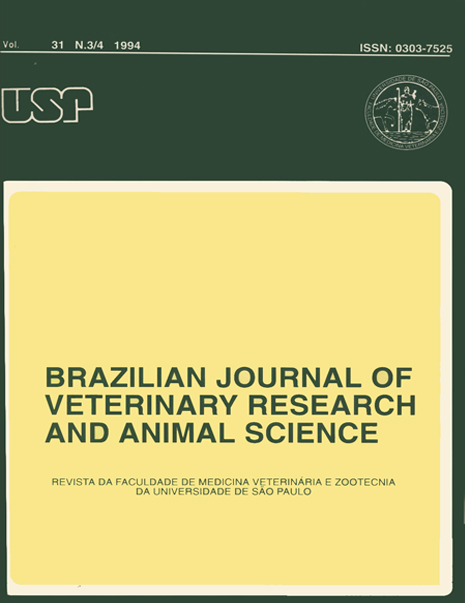Kinetic of vascular and cellular alterations in the carrageenin-induced peritonitis in Gallus gallus. Effect of steroidal and non-steroidal antiinflamatory drugs
DOI:
https://doi.org/10.11606/issn.1678-4456.bjvras.1994.52061Keywords:
Carrageenin, Inflammation, Peritonitis, Indometacin, Piroxican, Dexamethasone, Gallus gallusAbstract
The kinetic of vascular and cellular alterations in the carrageenin-induced peritonitis was investigated (500 mcg) in Gallus gallus and the effect of the pre-treatment with dexamethasone (0.5; 1.0 or 2.0 mg/kg), indomethacin (2.0; 4.0 or 8.0 mg/kg), pyroxiean (20.0; 40.0 or 80.0 mg/kg), given by oral route 30 minutes before the inflammatory stimulus. It was observed that the highest increase in both vascular permeability and leucocyte accumulation ocurred respectively 150 minutes and 4 hours after the carrageenin injection. Polymorphonuclear leukocytes were the predominant cell type in the exudate obtained 2 and 4 hours after the stimulus. An equilibriun between polymorphonuclear and mononuclear cells was observed with 24 hours of inflammation and the latter cell type was predominant after 48 hours. The pre-treatment with indomethacin and pyroxiean significantly (p<0.05) inhibited the vascular permeability increase but not the leukocytes counts. Dexamethasone was significantly reduced both vascular permeability increase and leukocyte accumulation. These results suggest that eicosanoids have a role in the vascular permeability increase but it is less relevant in the leuchocyte chemotaxis in carrageenin-induced acute inflammation in fowls. The vascular permeability increase and cellular migration are independent phenomena when the effect of antiinflammatory drugs are concerned.
Downloads
Downloads
Published
Issue
Section
License
The journal content is authorized under the Creative Commons BY-NC-SA license (summary of the license: https://





